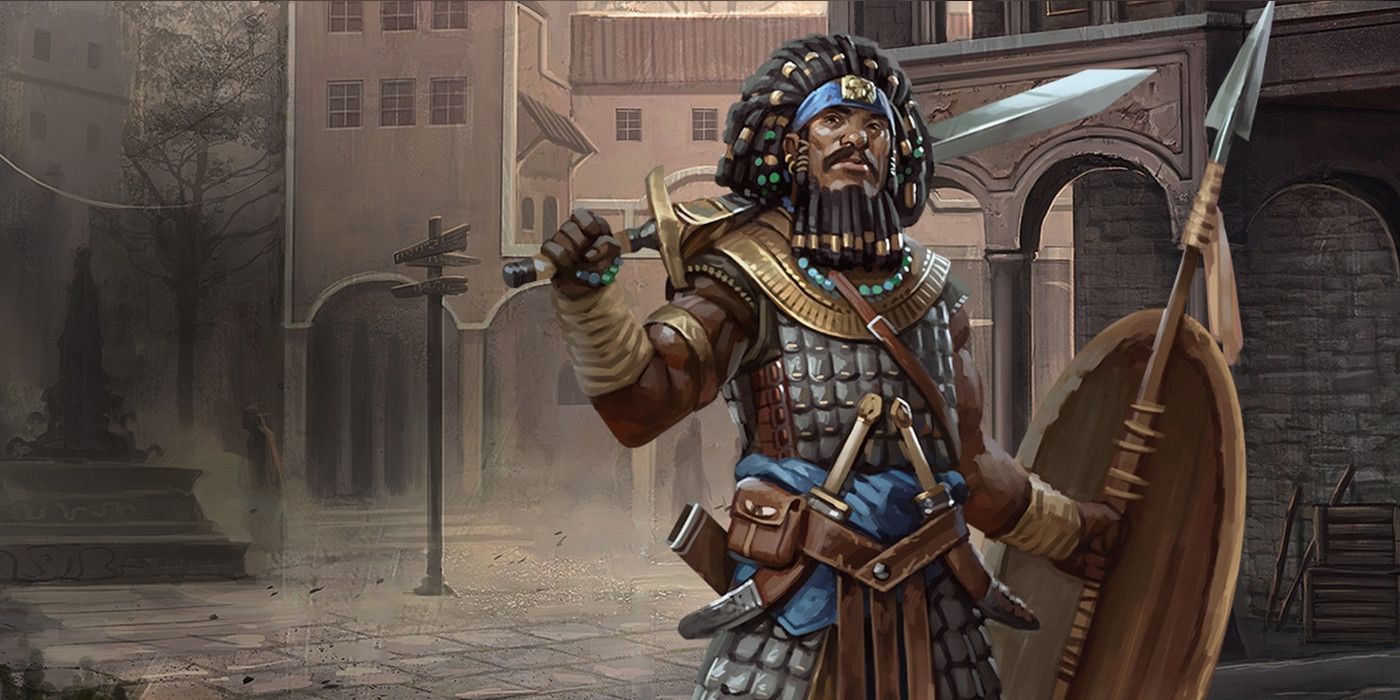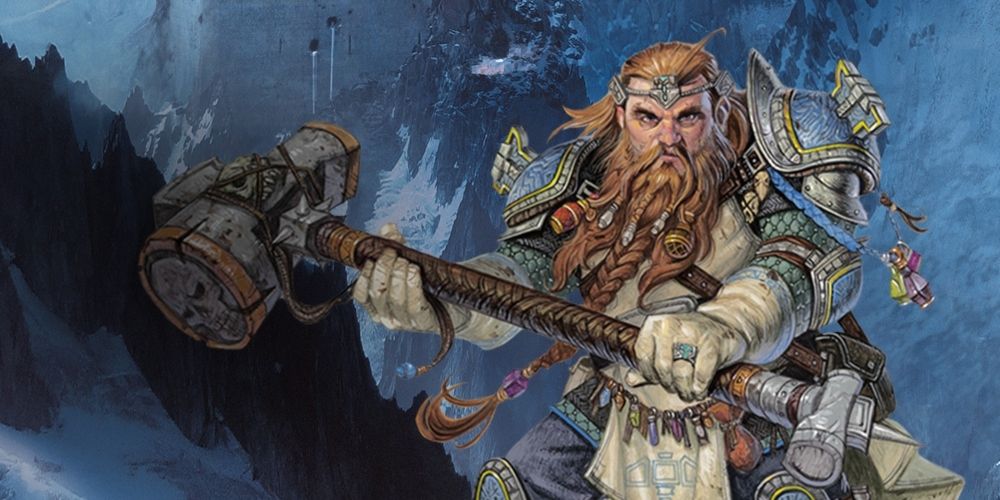[ad_1]
One D&D is the playtest guidelines at the moment obtainable for the subsequent iteration of Dungeons & Dragons, deliberate for a 2024 launch. Wizards of the Coast are giving gamers the possibility to check the foundations in their very own video games and provide suggestions that may form how the sport modifications sooner or later.
So far, the one playtest packet launched is one containing participant choices concerning character origins. Besides containing the foundations overhauling backgrounds, it accommodates the brand new and up to date statblocks for quite a lot of participant races. While many of those are much like Fifth Edition, there are some vital modifications to nearly all of them.
10 Races Don’t Give Ability Score Improvements
One of the largest modifications within the playtest impacts all of the printed races. Where Tasha’s Cauldron of Everything makes a race’s capability rating enhancements variable, One D&D modifications issues so races do not give any type of capability rating enhancements in any respect.
Instead, races present talents and affect a participant character’s look and proficiencies. Ability rating enhancements have been moved to a participant character’s background, the place they will enhance two or three stats relying on how their character has lived their life previous to changing into an adventurer.
9 Half-Elves And Half-Orcs Have Been Removed
Dungeons & Dragons has hardly ever had a sturdy algorithm for hybridizing participant character races. Instead, there are merely two hybrid races with an extended legacy within the sport: half-elf and half-orc. Traditionally the offspring of a human and the races in query, the 2 have been current in most D&D editions.
In One D&D, nonetheless, the foundations have eliminated the particular standing given to half-elves and half-orcs. Instead, the sport gives a perfunctory desk on mixing collectively any two races, involving choosing the statistics of 1, and mixing collectively the opposite traits from each races.
8 Humans Get A Feat By Default
Humans in Fifth Edition get two variations within the Player’s Handbook. Base people are thought of a closely underwhelming race, solely getting +1 to each stat, and a further language. By distinction, the variant people get smaller capability rating will increase however their selection of any feat within the sport — making them the most effective races obtainable.
In One D&D, people obtain just one statblock. It offers a feat alongside a free talent proficiency and free inspiration with each Long Rest. This feat is the Skilled feat by default, however it may be modified to any first-level feat of the participant’s selection, and it stacks with the free feat each participant character will get as a part of their background.
7 Tiefling Heritage Choices Have Been Expanded
In 5e, a lot of the focus for the tiefling race has been of their infernal elements, tying them to devils and the Nine Hells. Abyssal tieflings are an possibility given in Unearthed Arcana, however a lot of the new choices have been increasing the race’s tie to the Nine Hells. One D&D modifications this, with the bottom tiefling having choices encompassing all of the Lower Planes.
Infernal tieflings are tied to lawful evil planes like Acheron or the Nine Hells, abyssal tieflings to chaotic evil planes just like the Abyss or Pandemonium, and chthonic tieflings to impartial evil planes like Gehenna or Hades. The choices differ of their harm resistances, and within the spells they study at first, third, and fifth degree.
6 Gnome Saving Throws Are Expanded
Saving throws are an essential a part of the sport, and an space the place gnomes shine in 5e. One of the race’s most helpful base options is its Gnome Cunning, which provides a personality benefit on saving throws in opposition to spells that require Intelligence, Wisdom, or Charisma saving throws.
Already an efficient capability, this has been expanded in One D&D to have an effect on any saving throw that targets these capability scores. This is probably going as a result of shift seen later in 5e to exchange spells in monster statblocks with extra generic talents. This change vastly expands the flexibility’s scope to incorporate a a lot wider number of results.
5 Dragonborn Have Reverted To Their Initial State
Dragonborn are certainly one of 5e‘s contentious races, as a result of they pair an fascinating design and lore with an underwhelming statblock. Aside from resistance to a single harm sort and a largely ineffective breath weapon, the race will get little or no of their Player’s Handbook guidelines.
Fizban’s Treasury of Dragons gives new guidelines for the race, giving dragonborn much more selection and simpler talents. However, the One D&D playtest ignores these modifications. While they’ve darkvision, dragonborn get reverted to a category much like 5e‘s core guidelines.
4 Halflings Don’t Get Subraces
Halflings are one of many races that almost all carefully resembles their guidelines in 5e, however with one notable change. Unlike in Fifth Edition, halflings aren’t divided into lightfoot and stout halflings at base. Instead, they maintain all of their base talents and have some essence of the lightfoot halfling folded into the bottom race with automated proficiency in stealth.
The stout halfling’s poison resistance is nowhere to be seen, and neither are the skills of the ghostwise or lotusden halflings from different dietary supplements. Whether there are plans to make the race extra modular sooner or later stays unknown.
3 Orcs Added As A Base Race
For a very long time, D&D has primarily handled orcs as a default “monster race,” one thing that produces enemies initially. With 5e‘s altering strategy to races, nonetheless, the sport makes an attempt to current orcs as different and able to producing heroes.
One D&D makes the largest step on this course by making orcs a base race, an possibility obtainable by default. They fill the house left by the half-orc’s removing, taking up a number of of that race’s talents.
2 Drow No Longer Have Sunlight Sensitivity
Of the three subraces of elf offered in Fifth Edition‘s Player’s Handbook, the drow is broadly thought of the toughest to make use of. Despite the race’s highly effective talents, a characteristic referred to as Sunlight Sensitivity offers it drawback on assaults and Perception checks in direct daylight.
Although there are methods round this characteristic, it is thought of by many to be extra hassle than it is price. Consequently, the drow not have it in One D&D. Instead, they’re handled extra like excessive elves and wooden elves, with the first distinction being prolonged darkvision and totally different spells realized by every subrace.
1 Dwarves Can Give Themselves Tremorsense
One D&D appears to be leaning in the direction of races giving lively talents, one thing the participant can select to make use of throughout a clutch second quite than an always-on, passive capability. One of probably the most notable situations could be seen in One D&D‘s model of the dwarf, which has the flexibility Stonecunning.
Using this capability, a dwarf can provide themselves Tremorsense for a minute when standing on a stone floor. This lets them know the placement and motion of creatures on or in that stone floor, serving to counteract blindness, invisible creatures, and extra.
[ad_2]














